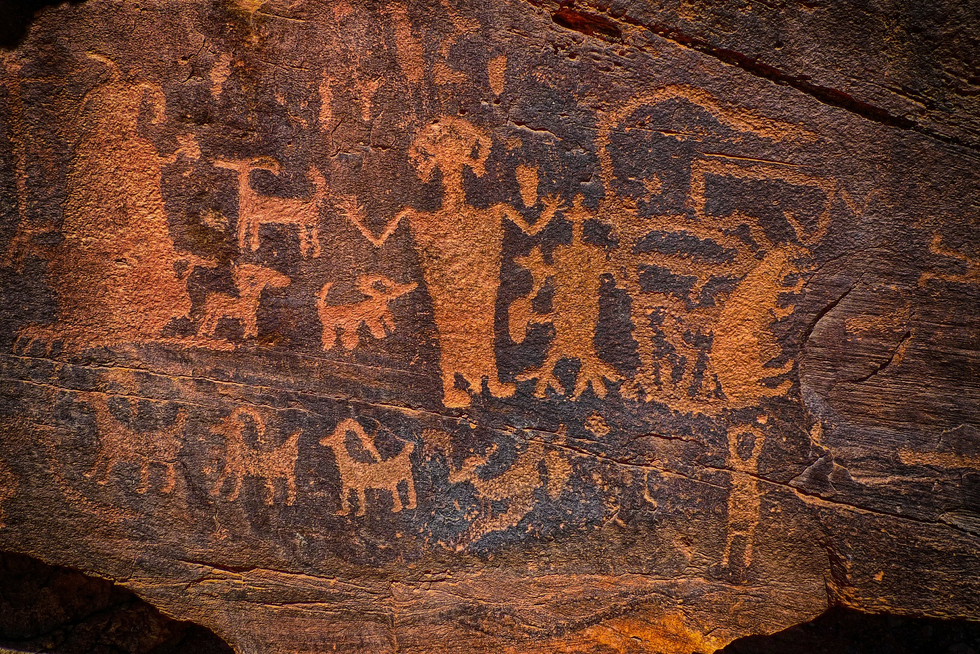The only way to be able to connect with these discoveries is directly through the folklore told by the indigenous peoples who inhabited the region. These discoveries may include fossils or evidences of natural phenomena, and can provide an insight into life before written records.
While the Lenape people near the Chemung River in modern-day New York and Pennsylvania named the river after their words meaning "big horn," there had been discoveries of mammoth tusks, which may have been the horns that they were referring to. The Lenape discovered these bones and explained to Thomas Jefferson, who was president of the United States at the time, how it may have ended up in there, by explaining that they were the ancestors of the buffalo. The river was definitely purposeful for the Lenape, since they cultivated squash, corn, and tobacco near it.
Although it would not validate every single detail of religious and mythological beliefs, these sites can provide an insight into the inspirations behind such beliefs. In the case of the Siwalik Hills, they were described in the Indian epic Mahabharata as being the site of a cataclysmic battle where giants and war elephants would be buried. It turned out that there were a lot of fossils that date back to the Pliocene period, which was the time period when giant mammals, including elephants, thrived.
There would definitely be a lot of spiritual significance given to the fossils even to the indigenous peoples who first encountered. In the case of the Ute nation in the American Southwest, they were seen to have worn as amulets the fossils of trilobites, which were a species of anthropod which existed 540-440 million years ago. Since indigenous peoples have made direct contact with these fossils and other prehistoric phenomena, then modern society should not dismiss their mythologies as fictional conjurations, rather as hints as to what life was like centuries--if not millenia--before colonization. This was the case with astrophysicists who were working alongside the Gunditjimara, an Australian Aboriginal tribe, in connecting a myth about a deluge which killed the people who did not make it to mountaintops with a tsunami that hit Australian coasts 11,000 years ago. When professionals like astronomers and scientists are contacting indigenous peoples to provide insight into their mythologies, then it is a sign that they know exceedingly more about their own landscape than even them.
The languages are also important as they can be directly tied to their history. In the case of Canadian place-names like Musqueam, Kwatlen, Matsqui, and Chilliwack, their etymologies, which come from the indigenous Salish languages, provide a hint into the foraging sites that were used by the Salish. In the case of Musqueam, it comes from the Salish word meaning "grass," which specifically refer to the plant grown in Fraser River Estuary; and Chilliwack means "valley of many streams."
By syncretizing with the geography, history, indigeneity, and language of the land, they can all help to uncover information overlooked by colonial powers. In order to truly understand the landscape, the discoveries have to give indigenous peoples more room to speak about their histories interacting with their own land.
- Aboriginal Songlines Helped Draw the Map in Australia – National ... ›
- Prehistoric Indian Burial Found Found Under Florida's Waters ›
- Australian Aboriginal peoples | History, Facts, & Culture | Britannica ... ›
- BBC - Earth - Why ancient myths about volcanoes are often true ›
- Ancient Sea Rise Tale Told Accurately for 10,000 Years - Scientific ... ›
- Prehistoric Native People - Florida Department of State ›
- No 'lost tribes' or aliens: what ancient DNA reveals about American ... ›
- Decolonizing Indigenous Histories – UAPress ›
- Prehistory, Southern Saskatchewan - Indigenous SK Encyclopedia ... ›
- Indigenous Agroforestry Systems in Amazonia: From Prehistory to ... ›














